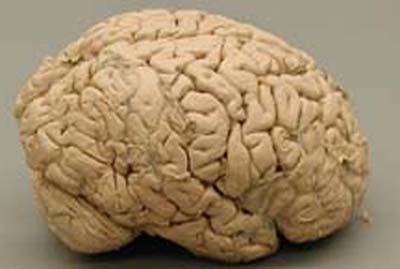Welcome

This site is a door to the unknown, a window to your assumptions, and maybe even a room of surprises! It is designed to let you explore questions about the variation of brain and behavior in a species.

For example, let's talk about the two of us. There's my brain on the left. Is it different from yours? How would we know? We're in the same species, I assume. Does that mean our brains will look the same??
Most people assume that different animals have different structures and functions of brains. From where does that assumption arise? Well, different animals behave differently, so we can assume that their different brains are partly responsible for those behavioral differences. (Go here for more discussion about inter-species comparisons)
Okay, what about us? We're both humans . . . so we act the same, right? We both love and work and smile and scratch our itches. We both yawn when we're sleepy and, in the mornings, we both probably hit the snooze button as long as we can. Do you think that means our brains look the same? Does your brain function the same as your sister's? Does your grand-mother's brain have the same structure as your brother's?
Wow- what interesting questions. Keep that curiosity in mind as you go through this site . . . Think about how you and I are alike or different . . . Think about how you are different from your grandfather and aunt and cousin and brother. Let's explore whether the behavioral differences we see within our own species are associated with brain differences.
This site is organized into four main sections, where we will look at questions such as:
|
| To navigate through the site, you can always use the index at the top of each screen. Each of the four sections of the site is assigned its own color, which you will see represented on the left side of the page. Click on one of the sections above or choose to go to:
 GENDER GENDER
|
Website Design by Patricia Anne Kinser, Haverford College
Biology Major with Concentration in Neural and Behavioral Sciences
Advisor: Dr. Paul Grobstein
Last updated January, 2001






